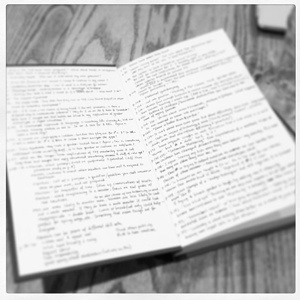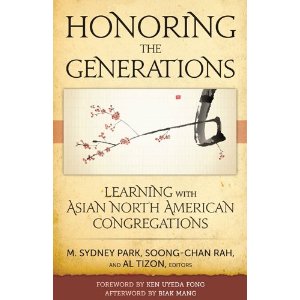My problem with Sandberg’s “Lean In” is that men who should read the book, who need to read the book, may not pick it up because it’s for women.
Most of the leadership books I’ve read are men’s books – leadership seen and practiced through the lens of men & masculinity in a business world developed by and and for men. I read, interpret, contextualize, and adapt the material through my lens as a Christian Asian American woman. But I read them. Lencioni. Maxwell. Depree. Covey. Rath & Conchie. Collins. Gladwell. Their books aren’t touted as men’s leadership development books, but they are written through that lens. Any personal stories included in the text reflect it. Sometimes their acknowledgements reflect it. And if I wanted to get really nit picky about it I would say most of these business leadership books (and even the Christian leadership books) are written through the lens of White majority male culture, even as our country’s population makes a shift away from a single majority.
My experience as an author for “More Than Serving Tea” only confirmed what I had suspected for years. The book was written by women for women, but never meant to be exclusively for women. Male pastors told me they had recommended the book to the women in their churches though they themselves had never read the book! Why not? Because why would a male pastor need to read a book that might minister and connect with more than half of their congregation?
So it came as a bit of a surprise to be asked to be a part of a book club discussion on “Lean In” with a group of Christian men. Deep respect for Fred Mok, English pastor at Chinese Church in Christ – South Valley in San Jose, CA, who cold-contact emailed me.
“I found your blog through your book and noticed you’ve been reading through ‘Lean In’.
Our church men’s group (4-5 guys) is going to be reading “Lean In” as our next book and would love to have a phone or Skype interview with you about the book as part of our club. This would be a great opportunity to get a prominent Asian American Christian woman’s perspective on some important issues.”
1) One of your recent blog posts mentions self-promotion. This is a value vital to success in Western society. But as Asian American Christians, we are not subject to those values. What might it look like to honor our Asian American communal and self-effacing heritage and lead in Western society without the arrogance of self-promotion?2) Based on your blog post about “If I wasn’t Afraid?” you talked about Sandberg’s motivation “comes in to nudge me back”. What does that mean? What do you need to be nudged back from? Did you mean nudged forward, since Sandberg’s emphasis is to motivate women to be more aggressive in their approach to getting ahead in the workforce? But, if you did mean “nudged back”, then what conflicts as a Christian women and mother is nudging you back?3) In chapter 1, Sandberg discusses gender stereotypes and how this starts with children. (For example, bottom of page 20 and following.) Certainly it has been cited for many years, the types of toys given to boys versus girls, and the examples of wood or metal shop versus cooking classes. What is your ‘take’ on this? To what degree is nature versus nurture playing a role?4) To what degree does the church cast women into stereotypic roles? Can you discuss any personal examples?5) How does being married to an Asian American man make it more difficult or easier to take a seat at the table? [does being married to an Asian American man put you at a disadvantage from someone like Sandberg? Do we, as Asian American men, have more expectations for our wives]6) If you were to give advice to your daughter about pursuing a career, how close would you hew to Sandberg’s party line to “lean in”?7) What’s it worth from a kingdom of God perspective for women to experience increased corporate advancement [Sandberg’s goal]?8) In chapter 4, Sandberg writes about careers are more like a jungle gym than a ladder – but what’s driving jumping from one job to another? From this chapter, it seems like money. Get in early and get rich. She says she joined Google because she believed deeply in their missions. What’s that? How did that change when she jumped to Facebook?

 And then that wonder turns into a hint of longing for what was once familiar, and that is exactly what happened for me as I read Honoring the Generations:Learning with Asian North American Congregations (M. Sydney Park, Soong-Chan Rah, and Al Tizon, editors; Judson Press 2012).
And then that wonder turns into a hint of longing for what was once familiar, and that is exactly what happened for me as I read Honoring the Generations:Learning with Asian North American Congregations (M. Sydney Park, Soong-Chan Rah, and Al Tizon, editors; Judson Press 2012).